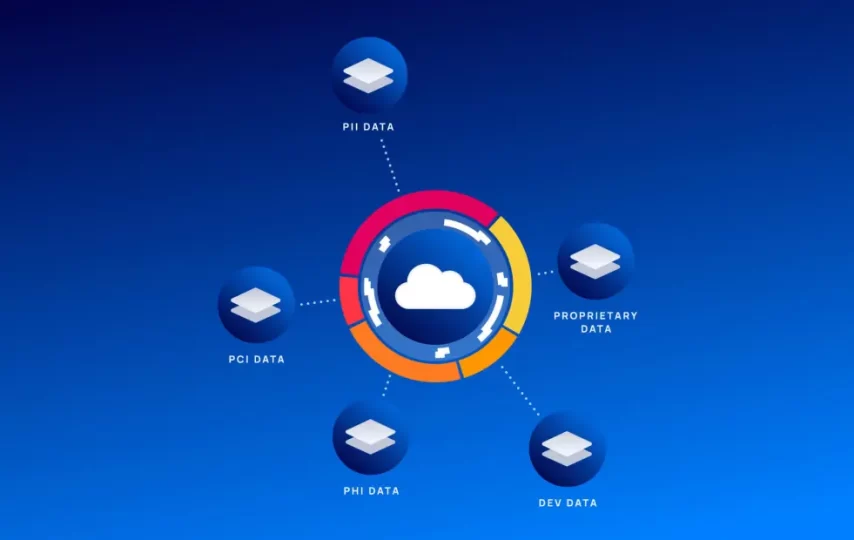By PJ Bradley
Organizations of all kinds have always stored and handled sensitive customer, employee, and business data that must be effectively safeguarded against evolving threats. The volume of this data is constantly increasing, and the use of cloud technology, Internet of Things (IoT) devices, and Shadow AI increases risk by dispersing data across a broad and convoluted attack surface, making it more difficult to find and protect.
Traditional data security solutions are often ineffective in the face of advanced threats in increasingly complex digital environments. A data-first security approach is not just useful but necessary for “addressing key cybersecurity challenges in today’s data-driven business environment” and protecting sensitive data against a wide range of threats. Data Security Posture Management (DSPM) is a data-focused approach to securing sensitive data in large and elaborate multi-cloud environments.
Modern Data Security Threats and Challenges
The increasing size and complexity of cloud environments employed by many organizations have created a large attack surface where data is spread out across many different platforms, including “shadow data” in places where the organization may not be aware of it. These digital environments are vulnerable and ripe for exploitation by bad actors as they work tirelessly to develop more advanced and sophisticated threats, some of which are built specifically to evade known security measures. Recent threat trends have included many attackers adopting Artificial intelligence and Machine Learning (AI/ML) to optimize the efficiency and payout of their attacks.
Traditional data security tools and measures—like preventing network entry or managing permissions and access—are not equipped to address evolving risks to sensitive data in sprawling cloud environments. They have difficulties in discovering all data across multiple platforms, and they often rely on threat detection and remediation rather than including proactive threat prevention.
Sensitive data is at risk from cybercriminal tactics and technologies like phishing and ransomware, internal risks like insider threats, errors like accidental data leaks and security misconfigurations, and more. Data leaks and breaches can result in a variety of consequences, which can prove catastrophic for an organization. Beyond the financial costs of remediating threats, organizations are also at risk of reputational damage, loss of competitive edge and industry esteem, and regulatory penalties.
How DSPM Works
In response to evolving threats and complex cloud environments, DSPM is an approach to cloud security that prioritizes finding and protecting data across multiple platforms. DSPM solutions can cover a wide range of functions traditionally performed by standalone legacy tools, focusing on data security across all platforms. Some of the key features of DSPM solutions include:
- Continuous data discovery and classification—discovering data across many platforms and classifying it based on risk and access levels to provide additional context for further analysis and data protection.
- Risk assessment and prioritization—evaluating the security posture of data stores and assessing risks to data, then prioritizing the most pressing threats.
- Configuration, policy, and compliance management—aligning data security configurations and policies with best practices, industry standards, and regulatory requirements.
- Detailed reporting, dashboards, and alerting—providing thorough reports and in-depth dashboards to offer detailed insights into data security postures and critical threats.
- Threat detection and remediation—monitoring data stores to identify risks, remediating threats in real-time, and providing intelligence to guide security teams in addressing problems.
- Behavior analysis—using AI/ML technologies to establish a baseline of normal behavior and monitoring activity for anomalies that could indicate threats to data security.
- Automation—carrying out some intensive and time-sensitive security processes automatically in order to reduce damage and streamline operations.
Advantages of Adopting DSPM
Organizations can reap many benefits from implementing DSPM tools. DSPM helps increase productivity and efficiency by saving effort on repetitive, time-consuming tasks, especially as data volumes increase beyond what a human security team can reasonably manage. It also uses technology like AI/ML to perform real-time monitoring and threat detection more effectively than legacy tools.
To combat the dangers of shadow data, DSPM solutions provide comprehensive visibility and in-depth insight into where sensitive data is stored, its security posture, how it is accessed and used, and by whom. This not only ensures that organizations are aware of all the data they have to protect, but also helps them to organize, understand, and protect their sensitive data.
DSPM can also help organizations improve the security posture of their data stores by identifying where security tools, policies, and configurations are misaligned with recommended practices and regulatory requirements. In addition to offering in-depth insights, DSPM solutions proactively seek and remediate vulnerabilities to prevent threats to data security.
Conclusion
The importance of data security is constant, but data storage methods and locations, cyber threats, and security technologies are always evolving. Traditional data security solutions often fall short in the face of advanced modern threats. DSPM is designed to protect data while accounting for the constant evolution of threat trends, digital environments, and technological tools.
With data spread out across vast environments, often including multiple externally hosted cloud platforms, security measures that search specific applications or systems for threats are ineffective and often miss important data. More than ever, protecting data against growing risks requires investing in advanced data-first security measures.
PJ Bradley is a writer on a wide variety of topics, passionate about learning and helping people above all else. Holding a bachelor’s degree from Oakland University, PJ enjoys using a lifelong desire to understand how things work to write about subjects that inspire interest. Most of PJ’s free time is spent reading and writing. PJ is also a regular writer at Bora.







